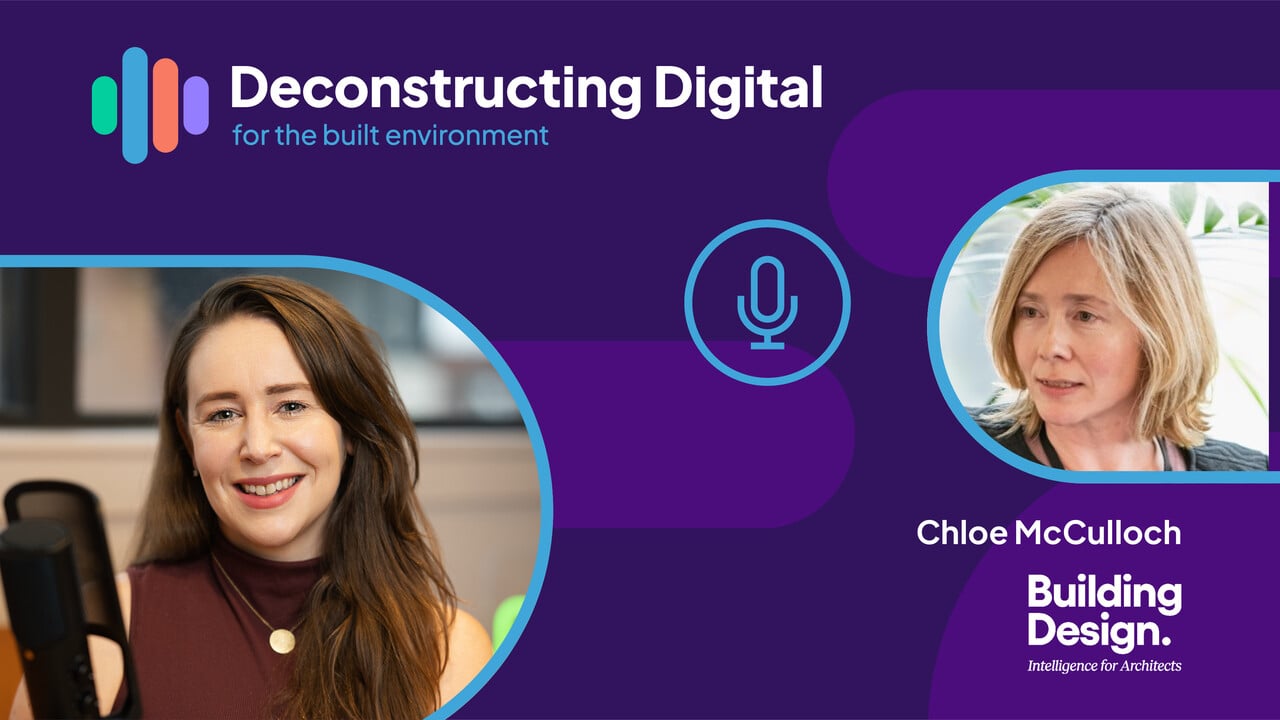In a recent episode of our Deconstructing Digital podcast, host Amelia Fletcher-Blackburn sat down with architect-turned-tech-entrepreneur Pierre Saunal to explore the persistent barriers to BIM adoption, the promise of automation, and how open standards can enable a more collaborative built environment.
Pierre’s journey from hand-drafting in Toulouse to founding SnapTwin – a technology company rethinking the scan-to-BIM process – highlights the dramatic evolution in design workflows over the past two decades.
While trained in traditional architecture, Pierre quickly recognised the necessity of mastering digital tools to communicate more effectively and collaboratively in modern practice.
Why BIM adoption is still slow
Despite its long-standing mandate for public sector projects in the UK, BIM adoption continues to lag. Pierre cites three core issues: cultural resistance (“we’ve always done it this way”), undervaluation of buildings as long-term assets, and poor implementation where digital twins lack meaningful data.
As he explains: “A digital twin is not just a 3D model. It has to have data in it… to be interrogated, simulated, used.”
Without this layer of data richness, the full benefits of BIM remain unrealised.
Automating the pain out of scan-to-BIM
SnapTwin, formerly known as CloudForma, emerged from the frustration of losing tenders due to high costs and time-consuming manual modelling. The team turned to automation, developing algorithms that convert point clouds into usable BIM models with increasing levels of accuracy.
By replicating manual workflows digitally, SnapTwin is making the early stages of design more accessible, particularly for clients looking to assess existing buildings for retrofit or redevelopment.
With 10% of the process now automated, Pierre envisions a future where anyone – from surveyors to homeowners – can generate a usable digital twin within minutes using just a smartphone.
Open standards: the foundation for global collaboration
A major enabler of SnapTwin’s global reach is its commitment to open standards such as IFC. These interoperable file formats allow teams across disciplines, geographies and software platforms to collaborate seamlessly.
Pierre emphasises that this “common language” is essential not just for architects and engineers but also for clients, local authorities and communities.
Less is more: why frugality matters in data
One compelling insight from Pierre was the notion of data frugality. Rather than overloading BIM models with excessive geometry and metadata, SnapTwin advocates for precision; just enough data, well-mapped, to support decision-making and future AI integration.
“AI can only do with what we are giving it to do with...If it can’t find the data, it just won’t work.” - Pierre Saunal
Designing tools people actually use
Usability is another critical factor in digital transformation. Pierre argues that digital tools must align with existing workflows rather than disrupt them.
By mirroring manual processes digitally, SnapTwin’s tools lower the barrier to adoption and enhance user trust. Automation is not about replacing professionals, it’s about giving them more time to focus on value-added tasks like design, analysis and collaboration.
Looking ahead: confidence through collaboration
As the conversation drew to a close, Pierre stressed the need for greater confidence across the industry. If tools can help teams collaborate more easily, reduce rework, and improve decision-making, digital transformation can become less daunting.
“We want people to not be afraid of knowing less,” he says. “We want to help people feel more confident.”
With open standards, targeted automation, and a user-first approach, SnapTwin’s journey reflects the broader digital shift happening across the built environment.
It’s no longer just about having the right tools – it's about having tools that everyone can trust and use.
Listen to the podcast
To hear the full conversation with Pierre, listen to the podcast episode 'Breaking BIM: Why It's Still Slow and How We Fix It' here.



